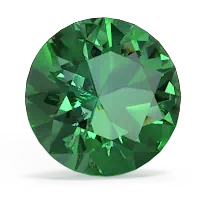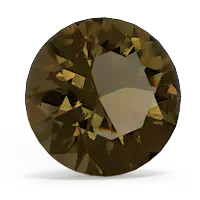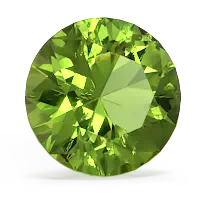


Emerald is associated with Venus, the Greek goddess of love and beauty. They say an emerald pendant can protect lovers from unfaithfulness. Yellow gold brings out the bronze and golden colors inside a smoky quartz pendant. White gold will highlight the brown and grey tones of the gem. Either way, you can't go wrong. Legends say that wearing a peridot pendant can bring happiness and contentment. Set in gold and surrounded with diamonds, the power of a peridot is said to intensify.